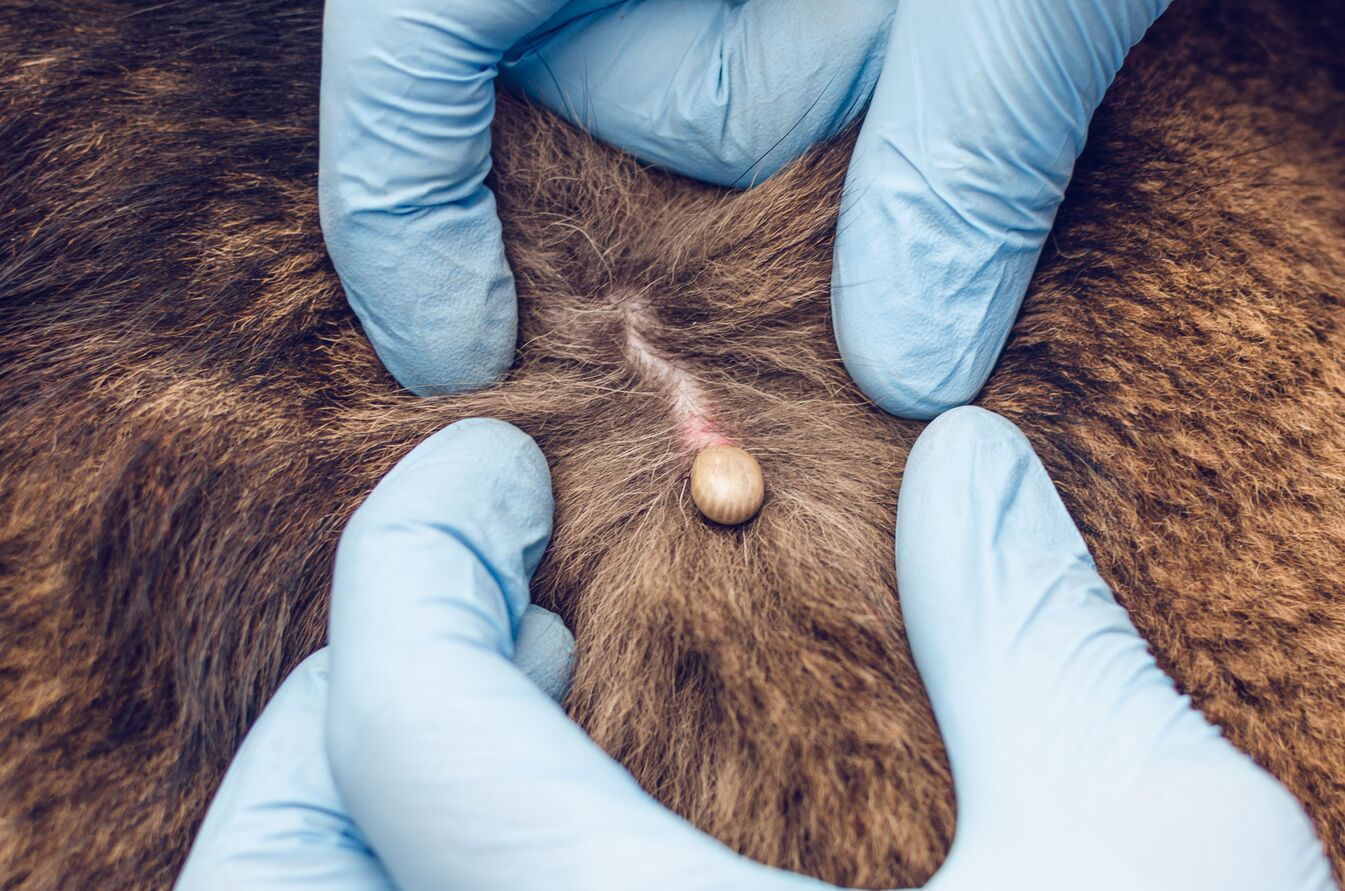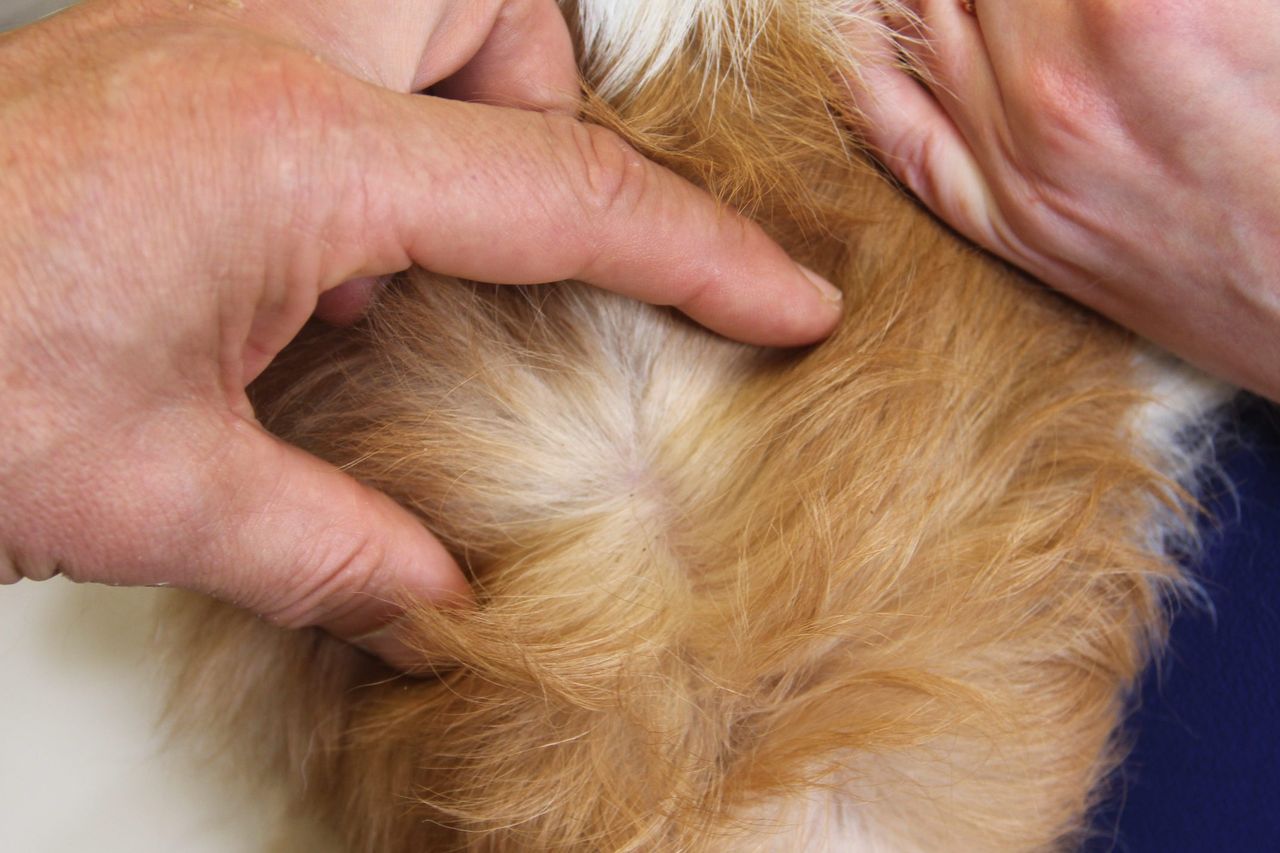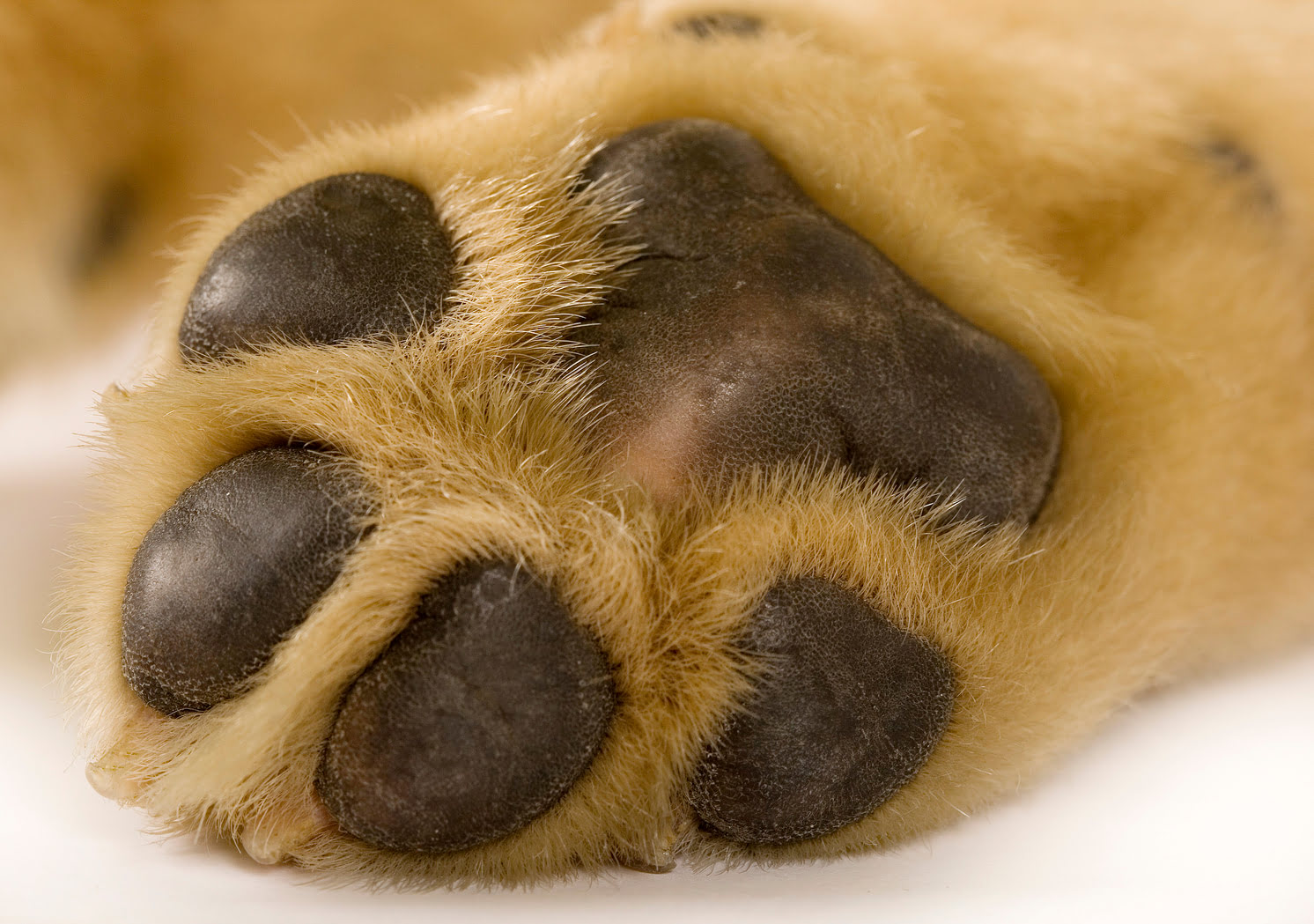Home>Health & Wellness>Common Health Issues>What Does A Tick Look Like In Dog Skin


Common Health Issues
What Does A Tick Look Like In Dog Skin
Modified: February 21, 2024
Learn about common health issues in dogs, including what a tick looks like in dog skin. Understand the signs and symptoms to keep your pet healthy.
(Many of the links in this article redirect to a specific reviewed product. Your purchase of these products through affiliate links helps to generate commission for Pawsomeoldies.com, at no extra cost. Learn more)
Table of Contents
Introduction
Ticks are tiny, blood-sucking parasites that can cause significant health issues for dogs. These pesky creatures belong to the arachnid family and are commonly found in grassy, wooded, and humid areas. When a tick latches onto a dog's skin, it can transmit harmful diseases, such as Lyme disease and Rocky Mountain spotted fever. Therefore, it's crucial for dog owners to be able to identify ticks and take prompt action to remove them.
Understanding the physical characteristics of ticks is essential for recognizing them on a dog's skin. Ticks have a small, round body with eight legs, and they can vary in color depending on their species and life stage. Identifying ticks on a dog's skin requires a keen eye and a thorough inspection, as these parasites can easily hide in the dog's fur, making them challenging to detect.
Knowing the common locations where ticks tend to attach themselves to a dog is also vital. Ticks often favor warm and moist areas, such as the ears, neck, and between the toes. By being aware of these typical hotspots, dog owners can regularly check these areas for any signs of tick infestation.
In this article, we will delve into the physical characteristics of ticks, provide guidance on identifying ticks on a dog's skin, and highlight the common locations where ticks are often found. By gaining a comprehensive understanding of these aspects, dog owners can take proactive measures to protect their furry companions from the potential harm caused by ticks.
Read more: What Does Cancer On A Dog’s Skin Look Like
Physical Characteristics of Ticks
Ticks are small arachnids with a unique set of physical characteristics that distinguish them from other parasites. Understanding these features is crucial for identifying ticks on a dog's skin.
Size and Shape
Ticks have a distinct appearance, characterized by a small, round body with eight legs. The size of ticks can vary depending on their life stage and species. When unfed, ticks are relatively flat, but as they engorge themselves with blood, their bodies become more elongated and swollen. This change in size is particularly noticeable after a tick has been feeding on a host for an extended period.
Color
The color of ticks can range from dark brown to reddish-brown, and some species may appear gray or even translucent. The coloration of ticks can also change as they feed, becoming darker as they consume blood. This variation in color makes it important to be attentive to ticks of different hues when inspecting a dog's skin.
Mouthparts
Ticks possess specialized mouthparts that enable them to anchor themselves onto a host and feed on blood. These mouthparts include a barbed feeding tube and a set of cutting structures that allow the tick to pierce the skin and extract blood. The presence of these distinct mouthparts can aid in differentiating ticks from other skin parasites.
Read more: What Does A Tick Scab Look Like On A Dog?
Overall Appearance
When examining a tick closely, its overall appearance may resemble a small spider due to its eight legs and rounded body. However, unlike spiders, ticks have a tough, leathery skin that protects them from being easily crushed. This resilient exterior allows ticks to withstand various environmental conditions and cling firmly to a host's skin.
By familiarizing oneself with the physical characteristics of ticks, dog owners can develop a keen eye for identifying these parasites on their pet's skin. This knowledge is invaluable for promptly detecting and removing ticks, thereby reducing the risk of tick-borne diseases and ensuring the well-being of dogs.
Identifying Ticks on Dog Skin
Identifying ticks on a dog's skin requires a vigilant and thorough approach. Ticks are adept at concealing themselves within a dog's fur, making their detection challenging. However, by employing careful observation and tactile examination, dog owners can effectively identify these troublesome parasites.
Visual Inspection
A visual inspection of a dog's skin is the initial step in identifying ticks. Ticks can vary in size, ranging from as small as a poppy seed to as large as a pencil eraser, depending on their life stage and species. Their coloration may also differ, spanning from dark brown to reddish-brown, and even translucent in some cases. When conducting a visual examination, it's essential to pay close attention to warm and moist areas, such as the ears, neck, underbelly, and between the toes, as ticks tend to favor these locations for attachment.
Tactile Examination
In addition to visual scrutiny, a tactile examination involves running one's fingers through the dog's fur, feeling for any unusual bumps or irregularities on the skin. Ticks can be distinguished by their small, round bodies and the presence of eight legs. When engorged with blood, ticks become more noticeable due to their swollen appearance. Running one's hands over the dog's body allows for the detection of any raised areas or abnormal textures, indicating the presence of ticks.
Use of Fine-Toothed Comb
Employing a fine-toothed comb designed for pet grooming can aid in identifying ticks. By combing through the dog's fur, particularly in dense or long-haired breeds, any ticks present can be dislodged and become visible on the comb. This method is particularly useful for detecting smaller ticks that may be challenging to spot through visual inspection alone.
Behavior Observation
Observing changes in the dog's behavior can also serve as an indicator of potential tick infestation. Dogs may exhibit signs of discomfort, excessive scratching or licking, or develop skin irritations in areas where ticks are present. Monitoring the dog's behavior and noting any unusual symptoms can prompt a closer inspection of the skin for the presence of ticks.
By employing a combination of visual inspection, tactile examination, the use of grooming tools, and observing the dog's behavior, dog owners can effectively identify ticks on their pet's skin. Prompt detection of ticks is crucial for initiating timely removal and mitigating the risk of tick-borne diseases, safeguarding the health and well-being of dogs.
Common Locations for Ticks on Dogs
Ticks are notorious for seeking out warm, moist areas on a dog's body to attach and feed. By understanding the common locations where ticks tend to infest, dog owners can proactively focus their inspection efforts on these areas, thereby reducing the risk of tick-borne diseases for their furry companions.
-
Ears: Ticks are often found in and around a dog's ears. The warm and protected environment within the ear canal provides an ideal habitat for ticks to latch onto and feed. Dog owners should carefully inspect the ear flaps, ear canals, and the area behind the ears for any signs of tick infestation.
-
Neck and Head: The neck and head region, including the area around the eyes and under the chin, are prime spots for ticks to attach themselves. The fur in these areas provides ticks with ample cover, making it essential for dog owners to thoroughly examine these regions during grooming or regular health checks.
-
Underbelly and Groin: Ticks favor the relatively less hairy regions of a dog's body, such as the underbelly and groin area. These areas provide ticks with easy access to the skin for feeding. Dog owners should pay close attention to these areas, especially in breeds with shorter or thinner coats.
-
Between Toes: The spaces between a dog's toes are another favored location for ticks. These areas provide ticks with a warm and sheltered environment, making them attractive spots for attachment. Dog owners should carefully inspect between the toes and paw pads for any signs of ticks, especially after outdoor activities.
-
Armpits and Legs: Ticks often target the armpits and the areas where the legs meet the body. These regions offer ticks easy access to the skin and are often shielded by the dog's fur, making them ideal hiding spots. Thorough inspection of these areas is crucial for detecting and removing ticks promptly.
-
Tail Base: The base of the tail is a common site for tick attachment. Ticks in this area can easily go unnoticed, especially in dogs with long or dense fur. Regular examination of the tail base is essential to prevent tick infestation and the potential transmission of tick-borne diseases.
By being aware of these common locations for ticks on dogs, dog owners can implement proactive measures to minimize the risk of tick infestation. Regular grooming, thorough inspections after outdoor activities, and the use of tick prevention products can significantly contribute to safeguarding the well-being of dogs from the threats posed by ticks.
Conclusion
In conclusion, being able to identify ticks on a dog's skin is a crucial skill for every dog owner. By understanding the physical characteristics of ticks, such as their size, color, and unique mouthparts, dog owners can develop a keen eye for detecting these troublesome parasites. Additionally, employing visual inspection, tactile examination, and the use of grooming tools can aid in the prompt identification of ticks, allowing for their timely removal and reducing the risk of tick-borne diseases.
Furthermore, recognizing the common locations where ticks tend to attach themselves to a dog's body is essential for proactive tick prevention. By focusing inspection efforts on areas such as the ears, neck, underbelly, between the toes, and the tail base, dog owners can effectively mitigate the risk of tick infestation and safeguard their furry companions' well-being.
It's important to note that ticks pose a significant health threat to dogs, as they can transmit a range of diseases, including Lyme disease, ehrlichiosis, and anaplasmosis. Therefore, regular tick checks and the implementation of preventive measures, such as tick control products and environmental management, are vital for protecting dogs from the potential harm caused by ticks.
By staying informed about ticks and being proactive in tick prevention, dog owners can ensure a safe and healthy environment for their beloved pets. Additionally, seeking guidance from veterinarians and staying updated on the latest advancements in tick prevention and control can further enhance a dog's overall well-being.
In essence, the ability to identify ticks on a dog's skin and take proactive measures to prevent tick infestation is a fundamental aspect of responsible pet ownership. By incorporating regular tick checks into a dog's grooming routine and staying vigilant during outdoor activities, dog owners can effectively protect their canine companions from the dangers associated with ticks, allowing them to lead happy, healthy lives free from the threat of tick-borne diseases.













